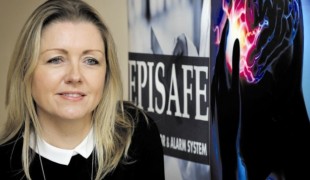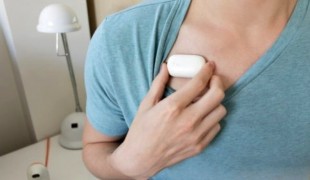- 3545
- 300
- 5
- 8
- 0
- Help Ukraine
About the solution
The student became paraplegic after a swimming accident when she was a teenager. She is paralysed from her chest down, with limited use of her hands.
The invention consists of a long, flexible wire with a camera that can display live images of a patient's skin, eyes, ear, nose, throat and mouth onto any mobile device. It can also enhance images and has its own WiFi network to ensure the recordings are safety transmitted. This solution allows Molly, despite her limitations, to perform full-body patient exams with limited physical contact.
“Very few universities accept first-year medical students who are paraplegic or quadriplegic. Historically, certain people have been dissuaded from areas of medicine. Most of the imaging systems that doctors use require the doctor to be up against the patient’s ear or mouth or nose. The physician’s eye has to be collinear with the object being examined. If the patient is lying down, going to the other side of the patient isn’t always possible, as some examination rooms aren’t big enough to take a wheelchair around both sides”, David Burke explained.
As they recognised patient examination would be a major challenge for a student like Molly, they decided to take action and develop a solution that would allow her to examine a patient’s skin, eyes, ears, nose, throat and mouth from a distance.
The team’s goal is to keep working on improving the innovation: they want to incorporate video recording and use 3D-tracking tech to measure a patient's strength and mobility during a neurological exam without having to make direct contact with the patient. The ultimate goal is that this device can help disable doctors everywhere.
Adapted from: https://bit.ly/2WSo6hB
https://bit.ly/2Iueshq
https://bit.ly/2IsqeZp
https://www.youtube.com/watch?v=ozjrdle7dM8
This solution shall not include mention to the use of drugs, chemicals or biologicals (including food); invasive devices; offensive, commercial or inherently dangerous content. This solution was not medically validated. Proceed with caution! If you have any doubts, please consult with a health professional.
DISCLAIMER: This story was written by someone who is not the author of the solution, therefore please be advised that, although it was written with the utmost respect for the innovation and the innovator, there can be some incorrect statements. If you find any errors please contact the patient Innovation team via info@patient-innovation.com
-
-
300
-
0
-
3472

Teacher Alex Truesdell is Transforming Lives: Adaptive Design Association Revolutionizes Disability Solutions
CAREGIVING
Drawing
Painting
Playing
BODY BALANCE: Maintaining body balance
(SELF)-CARE: DRINKING: Drinking independently.
(SELF)-CARE: EATING: Eating independently.
MOVING IN A WHEELCHAIR: Moving using a wheelchair.
Playing an instrument
Studying
Blindness
Hand Deformity
Neuromuscular Disorders
Assistive Daily Life Device (to help ADL)
Walking Aid (wheelchair/walker/crutches)
Restoring mobility
Replacing lost limbs
Enhancing health literacy
Promoting self-management
Promoting inclusivity and social integration
To improve Treatment/Therapy
Preventing (Vaccination, Protection, Falls, Research/Mapping)
Raise awareness
Caregiving Support
General and Family Medicine
Internal Medicine
Orthopedics
Pediatrics
Physical Medicine and Rehabilitation
United States
-
-
-
726
-
0
-
12571

Device to monitor Epilepsy seizures
CAREGIVING
Epilepsy
Assistive Daily Life Device (to help ADL)
Seizures
Enhancing health literacy
Promoting self-management
Managing Neurological Disorders
To implement a diagnostic tool
To improve Treatment/Therapy
Raise awareness
Caregiving Support
General and Family Medicine
Internal Medicine
Neurology
Pediatrics
United Kingdom
-
-
-
655
-
0
-
9698

Patient develops wearable for Asthma
VENTILATION
CAREGIVING
Asthma
Assistive Daily Life Device (to help ADL)
Treatment/Surgical device
App (Including when connected with wearable)
Pharma
Improving respiratory function
Promoting self-management
Manage Medication
Preserving Organ Function
To implement a diagnostic tool
Alleviating Allergies
To improve Treatment/Therapy
Preventing (Vaccination, Protection, Falls, Research/Mapping)
Caregiving Support
General and Family Medicine
Immuno-allergology
Pneumology
Australia
-
 en
en